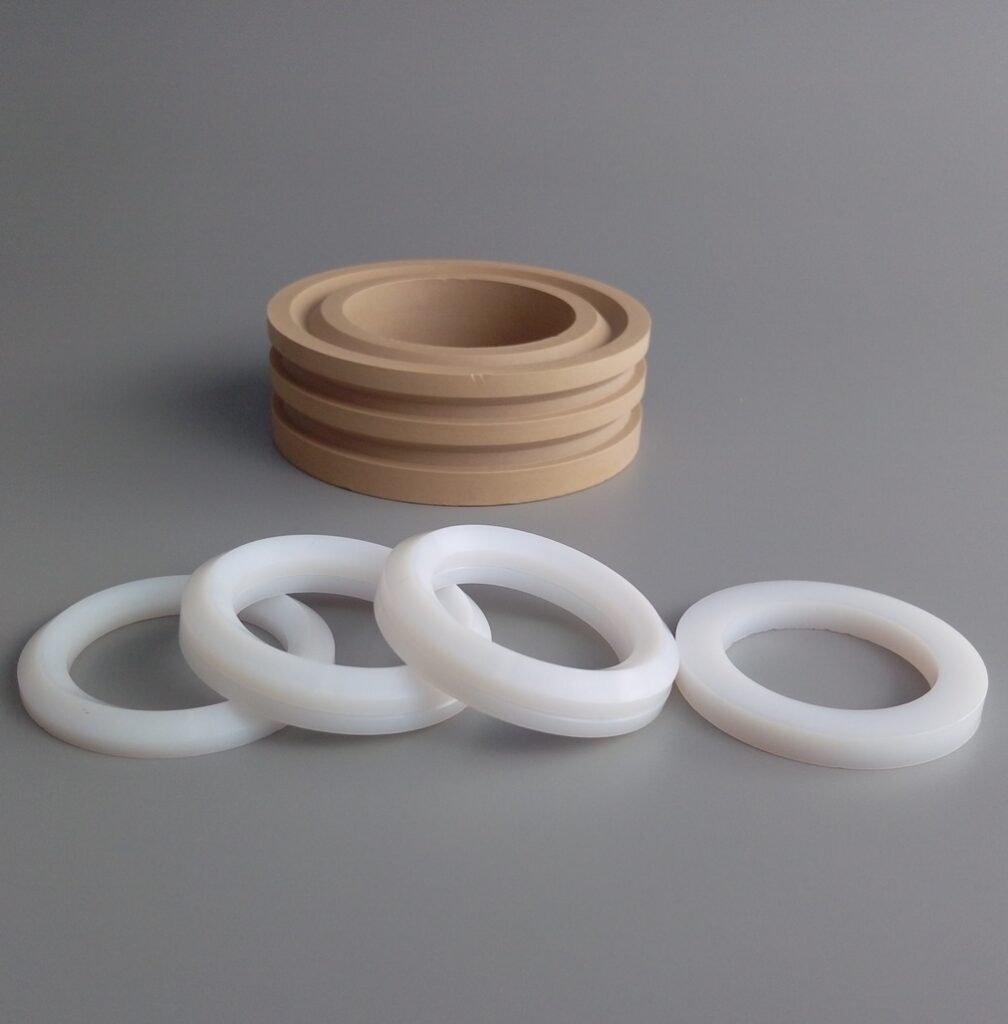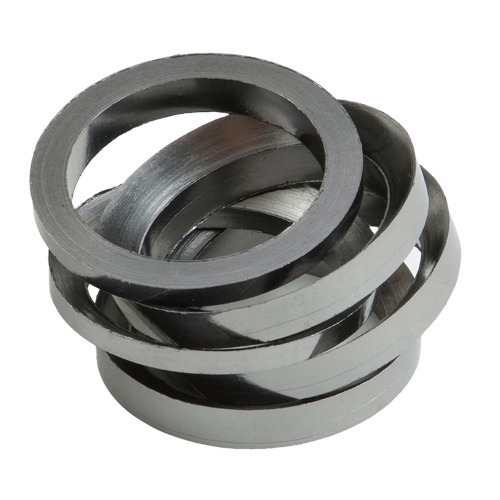
1. Introduction
The control valve is one of the terminal control elements of the automatic control system. As there are many high-temperature and high-pressure working conditions in chemical installations, some media are highly corrosive, toxic, flammable, and explosive. When the valve packing leaks, it will cause the waste of raw materials but also cause severe pollution to the environment. It can even cause fire, explosion, poisoning, and other life-threatening safety accidents. Therefore, we should give the control valve packing leakage problem sufficient attention, and therefore in the design selection, a reasonable choice of sealing filler is critical.
2. Control valve control valve packing role and classification
The valve part of the control valve consists of the valve internals and the valve body. The inner parts of the valve include the spool, the stem, the stuffing box, and the upper valve cover. One of the stuffing box parts is used to seal the valve stem. It is a resilient method to prevent the process medium from leaking on the surface of the stem through reciprocating or rotating movements. It is an integral part of the valve body, and the stem seal of the valve is almost always achieved using the stuffing box.
Control valve packing is the filling material for dynamic sealing. It is generally installed in the stuffing box of the upper valve cover, and its function is to stop the leakage of the controlled medium caused by the movement of the valve stem.
Commonly used packing according to the material is divided into two main categories: PTFE and flexible graphite.
2.1 PTFE
PTFE is a polymer compound made from tetrafluoroethylene by polymerization. It has excellent chemical stability, corrosion resistance, sealing, high lubrication non-stick, electrical insulation, and good anti-aging ability. Its corrosion resistance even exceeds that of glass and ceramics. Even with strong acids, strong alkalis, and strong oxidants, it has good corrosion resistance and is an ideal sealing material. However, its temperature resistance is poor. PTFE starts to crack in minimal quantities above 200°. It will produce creep due to pressure and heat, which in turn affects the sealing performance. It is also not suitable for molten alkali or fluoride applications.
Commonly used Teflon fillers are as follows.
(1) PTFE molding is woven filler. It is made of Teflon bulk woven and pressed. It is a loose material. It is flexible, durable, and has a good sealing effect. It is easy to replace and is one of the most widely used materials.
(2) V-shaped PTFE packing. It is generally made of PTFE bar turned and processed, and the packing structure is V-shaped. In the case of compression at both ends, due to the small friction coefficient of PTFE, it has the advantages of lubrication and good sealing performance. Furthermore, under the pressure of the medium in the valve, the lip of the outer ring of the packing is always tight against the inner wall of the stuffing box when it is opened, thus achieving a static seal. Also, under pressure, the lip of the inner ring of the packing will always be close to the stem when it is open to ensure a dynamic seal. In this way, even if the valve stem moves up and down, the sealing is also guaranteed.
(3) Teflon – graphite packing. Adding some glass fibers, graphite, and molybdenum disulfide improve the creep resistance and thermal conductivity of PTFE. However, the hardness becomes bigger, the corrosion resistance decreases, and the sealing performance decreases.。
2.2 Flexible graphite
Flexible graphite material is a non-fibrous material. It is made by removing impurities from natural flake graphite and then treated with a strong oxidizing mixture of acids to become graphite oxide. The heat decomposition of the graphite oxide releases carbon dioxide, and the volume expands dramatically, thus turning it into flexible graphite with a loose, soft, and tough texture.
2.2.1 Feature
(1) It has excellent heat and cold resistance. Flexible graphite has little change in its physical properties from ultra-low temperatures of -250°C to high temperatures of +600°C.
(2) It has excellent chemical resistance. Flexible graphite, in addition to nitric acid, concentrated sulfuric acid, and other strong oxidizing media has corrosion. In other acids, alkalis, and solvents, almost no corrosion.
(3) It has good self-lubricating properties. Flexible graphite, like natural graphite, when subjected to external forces, is easy to produce sliding. Thus it has self-lubrication and good sealing performance.
(4) Because of its porous, it is loose,e, and curly. Its resilience and flexibility are good. It has good floating performance when the shaft or sleeve has radial circular runout due to manufacturing, installation, and other eccentricities. Even if the graphite cracks, it can also be well fitted, thus ensuring a tight fit and preventing leakage.
2.2.2 Types of graphite fillers
(1) Filamentary or woven: this type of packing is more flexible and can wrap around the stem and purify the surface of the stem. Woven graphite packing can overcome leakage caused by wear and tear of other types of graphite packing. However, woven graphite packing is prone to permeation due to the voids caused by the filamentary structure.
(2) Flake graphite is a packing ring made of several sheets of graphite pressed together. Its texture is perpendicular to the surface of the stem, forming a square section, so the fluid is not easy to penetrate. However, it also reduces axial pressure to radial pressure and requires a greater compression force to seal.
(3) Curved flake graphite: its texture is parallel to the stem axially and is made from several graphite flakes. The pressure of the curved flake graphite is much higher when it is pressed than when it is working, so it does not shrink again in the stuffing box. At high temperatures, it is known by its principle to penetrate easily. However, it is now widely used due to its easy processing and low price.
3. Main causes of filling leakage
There are various reasons for packing leakage in the actual use of control valves in the field. However, in the area of maintenance, we should be for the actual use of the valve for specific analysis and judgment, and then fundamentally eliminate the causes of leakage and solve the safety risks. Therefore, according to the law of leakage, we summarize the main reasons as follows.
(1) It may be the wrong packing material and type choice. If we choose tetrafluoride packing in 150 ℃ -200 ℃ working conditions, packing in critical working conditions for a long time will be a small creep. It will be subject to high-pressure media, making packing sealing performance decline. Another example is that we choose a woven type of packing when encountering liquid ammonia, tar, fuel, and other porous media. These cases will be affected by high temperature and high-pressure media and easy to produce leakage.
(2) It may be that the packing installation method is not appropriate. After the packing is installed in the stuffing box, it is necessary to apply axial pressure on it through the gland. Due to the plasticity of the filling, it generates radial force and is in close contact with the valve stem. If the packing is tightened in the installation, the force is not uniform, which will make this contact very uneven. Some parts of the connection lost or did not contact will also cause packing leakage.
(3) In using the control valve, there is a relative movement between the stem and the packing. This movement is called axial movement. In the process of use, with the fluid medium’s high temperature, high pressure, and permeability, control valve packing letter is also the occurrence of leakage phenomenon more parts. The leading cause of packing leakage is interface leakage. For textile packing, there is also leakage (pressure media leaking outwards along with the tiny gaps between the packing fibers). The interface leakage between the stem and the packing is caused by the gradual decay of the packing contact pressure, the aging of the filler itself, loss of elasticity, and other reasons. At this point, the pressure medium will leak outwards along the contact gap between the filler and the stem.
(4) Frequent action of the control valve, bending of the stem, wear, corrosion, and decline in finish will cause the packing to wear and leak.
(5) It may be because the control valve in working conditions changes. For example, in the process of driving the device to warm up, the control valve from the cold state to the hot state, the hot state makes the medium change. As a result, thermal expansion affects the valve stem, so the packing gap becomes larger, resulting in serious packing leakage.
(6) It may be because the packing gland is not tight or skewed, or the control valve is installed horizontally. Therefore, it will cause poor contact between the stem and the packing, and the gap may be too large or too small.


4. Countermeasures to prevent filling leakage
1) To make the packing easy to load, chamfering at the top of the stuffing box, we need to place a metal protection ring with appropriate clearance at the bottom of the stuffing box that is resistant to erosion (the contact surface with the packing cannot be beveled). In addition, it can prevent the filling from being pushed out by medium pressure.
(2) We need to improve the surface accuracy and finish of the stem and stuffing box. Suppose the sum of the coefficient of friction between the various movable parts is zero. In that case, you can uniformly transfer the force acting on the packing gland to the entire packing without any attenuation. But the actual sum of frictional forces exists and cannot be zero. The radial force acting on the filling decreases as the distance from the gland increases and decreases. The greater the friction, the greater the pressure decay. Once the sealed pressure exceeds the force on the packing, it will start to leak. Therefore the stem and stuffing box must not be scratched, pitted, or worn during maintenance. In addition, it has to have a good finish.
(3) We have to choose the suitable material. The material must have the ability to resist temperature changes and have creep resistance, slack resistance, and oxidation resistance. In general, we give priority to Teflon when the conditions are met and graphite when they are not. We can also choose mixed packing. One is a mixture of graphite and Teflon fillings. The other is a mixture of O-ring and V-filler. Finally, we can select graphite packing for media with strong permeability.
(4) When filling material, we should add one circle after another, and use the press one by one, press firmly, so that the packing force is uniform. Open packing should be staggered up and down 90 ° or 120 °. The number of circles of packing added should be suitable for no external leakage. If you add more minor packing gland will enter the stuffing box, easy to cause leakage.
(5) For spring-loaded PTFE packing, the gland screws should be tightened symmetrically and not skewed. Other types of packing do not need to be tightened up so much that leaks are impossible.
(6) After the new or control valve has just been overhauled, we should check the packing for leakage. If there is a leak to be dealt with on time to prevent the packing leakage is getting bigger and bigger.
5. Cautions
(1) Formed packing needs to be cut at 45°, and each ring cut must be staggered by 90° or 120° during installation.
(2) When using PTFE forming packing under high pressure, we must pay attention to the cold flow characteristics.
(3) The sealing effect of flexible graphite ring alone is not good. Therefore, you should use it in combination with graphite braided packing.
(4) You cannot use graphite packing for strong oxidants, such as concentrated sulphuric acid, nitric acid, and other media.
(5) The dimensional accuracy and surface roughness of the packing letter and the valve stem’s dimensional accuracy and surface roughness are the keys to the sealing of the forming packing.
6. Conclusion
In the field of practical application for many years, the control valve packing leakage occurs for various reasons. However, as long as we diligently observe and carefully analyze the causes of leakage, you can still eliminate the problem of packing leakage. At the same time, we should also know that some control valves produce packing leakage for more complex reasons and leakage of more factors, but we also need to continue to analyze and explore in the future.






